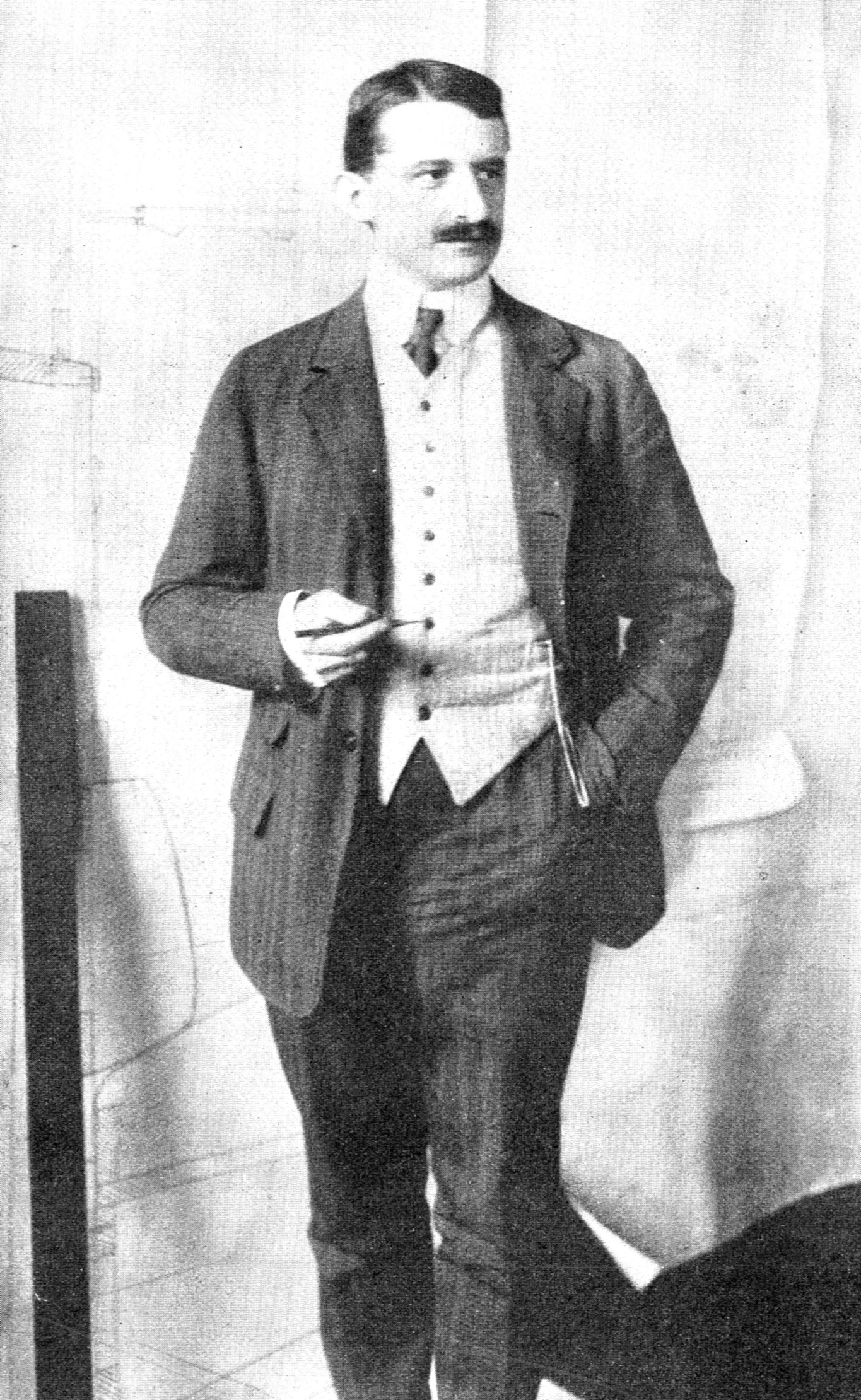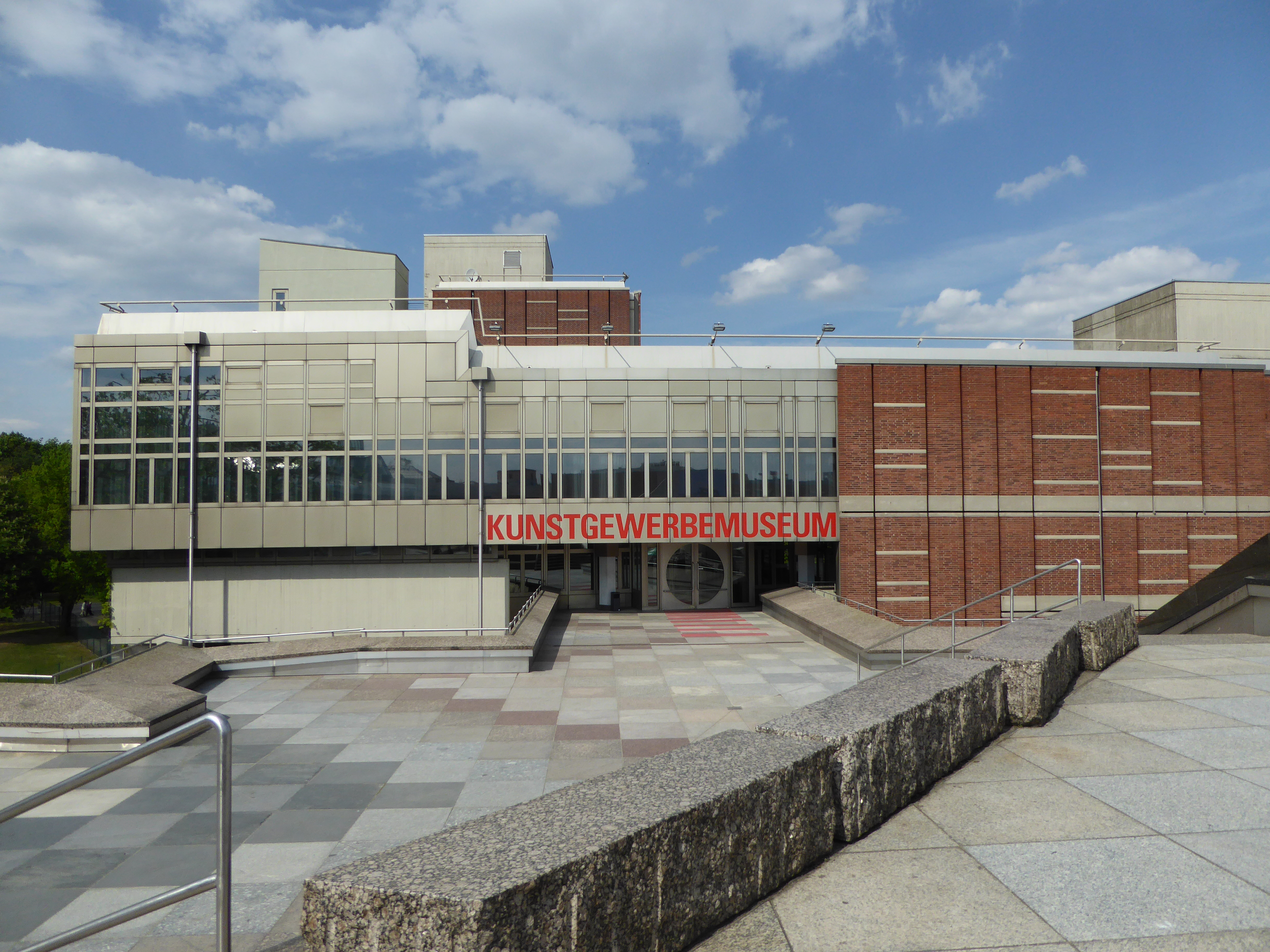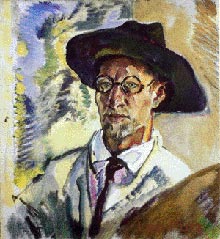|
Bruno Paul
Bruno Paul (19 January 1874 – 17 August 1968) was a German architect, illustrator, interior designer, and furniture designer. Trained as a painter in the royal academy just as the Munich Secession developed against academic art, he first came to prominence as a cartoonist and illustrator in the German ''fin de siècle'' magazine ''Jugend'', and in the satirical ''Simplicissimus'' from 1897 through 1906, in the years where its criticism of Wilhelm II brought prosecutions from the government. By 1907 Paul became one of the founding members of the Deutscher Werkbund, and had launched multiple careers in industrial design, interior design (notably, for Norddeutscher Lloyd's ocean liners), furniture design, and architecture. His work of the time reflects a historic stylistic transition from the curved shapes and floral imagery of Jugendstil to simpler forms, straighter lines, and an adaptation to machine production methods. By 1907 Paul had also been appointed Director of the ... [...More Info...] [...Related Items...] OR: [Wikipedia] [Google] [Baidu] |
Paul Hoecker
Paul Hoecker (11 August 1854, Oberlangenau – 13 January 1910, Munich) was a German painter of the Munich School and founding member of the Munich Secession Biography His passion for art developed gradually, beginning at the Gymnasium in Neustadt, where he was known for his humorous drawings and caricatures of his instructors. In 1874, he became a student at the Academy of Fine Arts Munich, which he attended until the spring of 1879. His most influential instructor was Wilhelm von Diez, who led him away from genre painting to a more impressionistic style In 1882, he took a long journey, which included visits to Paris, the Netherlands, Holstein, the German seaports and then back to Munich, where he became friends with Fritz von Uhde, Bruno Piglhein and Max Liebermann. The next year, he had a display at the Munich International Art Exhibition,Fritz von Ostini: ''Paul Hoecker und seine Schule''. Velhagen & Klasings Monatshefte, Heft 6, Februar 1913. then travelled again to ... [...More Info...] [...Related Items...] OR: [Wikipedia] [Google] [Baidu] |
Kunstgewerbemuseum Berlin
__NOTOC__ The Kunstgewerbemuseum, or Museum of Decorative Arts, is an internationally important museum of the decorative arts in Berlin, Germany, part of the Staatliche Museen zu Berlin (Berlin State Museums). The collection is split between the Kunstgewerbemuseum building at the Kulturforum and Köpenick Palace History It was founded in 1868 as the ''Deutsches Gewerbe-Museum zu Berlin'', and originally had a teaching institute as well as a public museum. The collection grew significantly in the 1870s, and it was renamed ''Kunstgewerbemuseum'' in 1879. In 1881 it relocated into the Martin-Gropius-Bau – where Priam's Treasure was also on display for a time – and in 1921 it moved into the Stadtschloss.Heute mal Extremitäten Tobias Timm, '' |
William II, German Emperor
Wilhelm II (Friedrich Wilhelm Viktor Albert; 27 January 18594 June 1941) was the last German Emperor (german: Kaiser) and King of Prussia, reigning from 15 June 1888 until his abdication on 9 November 1918. Despite strengthening the German Empire's position as a great power by building a powerful navy, his tactless public statements and erratic foreign policy greatly antagonized the international community and are considered by many to be one of the underlying causes of World War I. When the German war effort collapsed after a series of crushing defeats on the Western Front in 1918, he was forced to abdicate, thereby marking the end of the German Empire and the House of Hohenzollern's 300-year reign in Prussia and 500-year reign in Brandenburg. Wilhelm II was the son of Prince Frederick William of Prussia and Victoria, German Empress Consort. His father was the son of Wilhelm I, German Emperor, and his mother was the eldest daughter of Queen Victoria of the United Kingdom an ... [...More Info...] [...Related Items...] OR: [Wikipedia] [Google] [Baidu] |
Louisiana Purchase Exposition
The Louisiana Purchase Exposition, informally known as the St. Louis World's Fair, was an World's fair, international exposition held in St. Louis, Missouri, United States, from April 30 to December 1, 1904. Local, state, and federal funds totaling $15 million were used to finance the event. More than 60 countries and 43 of the then-45 American states maintained exhibition spaces at the fair, which was attended by nearly 19.7 million people. Historians generally emphasize the prominence of the themes of Race (human categorization), race and imperialism, and the fair's long-lasting impact on intellectuals in the fields of history, art history, architecture and anthropology. From the point of view of the memory of the average person who attended the fair, it primarily promoted entertainment, consumer goods and popular culture. The monumental Greco-Roman architecture of this and other fairs of the era did much to influence permanent new buildings and master plans of major cities. ... [...More Info...] [...Related Items...] OR: [Wikipedia] [Google] [Baidu] |
Exposition Universelle (1900)
The Exposition Universelle of 1900, better known in English as the 1900 Paris Exposition, was a world's fair held in Paris, France, from 14 April to 12 November 1900, to celebrate the achievements of the past century and to accelerate development into the next. It was held at the esplanade of Les Invalides, the Champ de Mars, the Trocadéro and at the banks of the Seine between them, with an additional section in the Bois de Vincennes, and it was visited by more than 50 million people. Many international congresses and other events were held within the framework of the Exposition, including the 1900 Summer Olympics. Many technological innovations were displayed at the Fair, including the ''Grande Roue de Paris'' ferris wheel, the '' Rue de l'Avenir'' moving sidewalk, the first ever regular passenger trolleybus line, escalators, diesel engines, electric cars, dry cell batteries, electric fire engines, talking films, the telegraphone (the first magnetic audio recorder), the ... [...More Info...] [...Related Items...] OR: [Wikipedia] [Google] [Baidu] |
Richard Riemerschmid
Richard Riemerschmid (20 June 1868 – 13 April 1957) was a German architect, painter, designer and city planner from Munich. He was a major figure in ''Jugendstil'', the German form of Art Nouveau, and a founder of architecture in the style. A founder member of both the ''Vereinigte Werkstätte fĂĽr Kunst im Handwerk'' (United Workshops for Art in Handcrafts) and the Deutscher Werkbund and the director of art and design institutions in Munich and Cologne, he prized craftsmanship but also pioneered machine production of artistically designed objects. Life and career Riemerschmid was born in Munich, the sixth of nine children of Eduard Riemerschmid, who headed the Munich distillery founded by his father Anton Riemerschmid,Winfried Nerdinger, ''Richard Riemerschmid, vom Jugendstil zum Werkbund: Werke und Dokumente. Eine Ausstellung der Architektursammlung der Technischen Universität MĂĽnchen, des MĂĽnchner Stadtmuseums und des Germanischen Nationalmuseums NĂĽrnberg'', Ausste ... [...More Info...] [...Related Items...] OR: [Wikipedia] [Google] [Baidu] |
Bernhard Pankok
Bernhard Wilhelm Maria Pankok (16 May 1872, Münster — 5 April 1943, Baierbrunn) was a German painter, graphic artist, architect, and designer. His works are characterized by the transition between Art Nouveau and the International Style. His furniture and book design, such as the catalog for the German section of the Exposition Universelle (1900) in Paris, have garnered him the most recognition. Biography From 1889 to 1891, he studied at the Kunstakademie Düsseldorf, with Heinrich Lauenstein, Adolf Schill, Hugo Crola and Johann Peter Theodor Janssen. He opened a studio in Munich in 1892; working as a freelance artist, graphic designer and illustrator for the magazines '' Pan'' and '' Jugend''. He also served as a teacher for his younger brother, , and was one of the co-founders of the (United Workshops for Art in Crafts). In 1901, he married Antoinette Coppenrath (1870–1920),a sister of the landscape painter . The following year, they moved to Stuttgart. In 1907, he ... [...More Info...] [...Related Items...] OR: [Wikipedia] [Google] [Baidu] |
Peter Behrens
Peter Behrens (14 April 1868 – 27 February 1940) was a leading German architect, graphic and industrial designer, best known for his early pioneering AEG Turbine Hall in Berlin in 1909. He had a long career, designing objects, typefaces, and important buildings in a range of styles from the 1900s to the 1930s. He was a foundation member of the German Werkbund in 1907, when he also began designing for AEG, pioneered corporate design,graphic design, producing typefaces, objects, and buildings for the company. In the next few years, he became a successful architect, a leader of the rationalist / classical German Reform Movement of the 1910s. After WW1 he turned to Brick Expressionism, designing the remarkable Hoechst Administration Building outside Frankfurt, and from the mid 1920s increasingly to New Objectivity. He was also an educator, heading the architecture school at Academy of Fine Arts Vienna from 1922 to 1936. As a well known architect he produced design across Germany, ... [...More Info...] [...Related Items...] OR: [Wikipedia] [Google] [Baidu] |
Jugendstil
''Jugendstil'' ("Youth Style") was an artistic movement, particularly in the decorative arts, that was influential primarily in Germany and elsewhere in Europe to a lesser extent from about 1895 until about 1910. It was the German counterpart of Art Nouveau. The members of the movement were reacting against the historicism and neo-classicism of the official art and architecture academies. It took its name from the art journal '' Jugend'', founded by the German artist Georg Hirth. It was especially active in the graphic arts and interior decoration. Its major centers of activity were Munich and Weimar and the Darmstadt Artists' Colony founded in Darmstadt in 1901. Important figures of the movement included the Swiss graphic artist Hermann Obrist, Otto Eckmann, and the Belgian architect and decorator Henry van de Velde. In its earlier years, the style was influenced by Modern Style (British Art Nouveau style). It was also influenced by Japanese prints. Later, under the Secessio ... [...More Info...] [...Related Items...] OR: [Wikipedia] [Google] [Baidu] |
Ferdinand Von Rezniçek
Ferdinand is a Germanic name composed of the elements "protection", "peace" (PIE "to love, to make peace") or alternatively "journey, travel", Proto-Germanic , abstract noun from root "to fare, travel" (PIE , "to lead, pass over"), and "courage" or "ready, prepared" related to Old High German "to risk, venture." The name was adopted in Romance languages from its use in the Visigothic Kingdom. It is reconstructed as either Gothic or . It became popular in German-speaking Europe only from the 16th century, with Habsburg rule over Spain. Variants of the name include , , , and in Spanish, in Catalan, and and in Portuguese. The French forms are , '' Fernand'', and , and it is '' Ferdinando'' and in Italian. In Hungarian both and are used equally. The Dutch forms are and ''Ferry''. There are numerous short forms in many languages, such as the Finnish . There is a feminine Spanish, Portuguese and Italian form, . Royalty AragĂłn/LeĂłn/Castile/Spain *Ferdinan ... [...More Info...] [...Related Items...] OR: [Wikipedia] [Google] [Baidu] |
Leo Putz
Leo Putz (18 June 1869, Merano, South Tyrol, Austria-Hungary – 21 July 1940, Merano, Kingdom of Italy) was a Tyrolean painter. His work encompasses Art Nouveau, Impressionism and the beginnings of Expressionism. Figures, nudes and landscapes are his predominant subjects. Life His father, Karl Putz, was the Mayor of Merano. He began his studies at the age of sixteen at the Academy of Fine Arts Munich, where he studied with the history painter Gabriel von Hackl. Convinced that he had great talent, his father sent him to the AcadĂ©mie Julian in Paris. After military service, he returned to Munich and studied with Paul Hoecker. He opened his first studio in 1897. That same year, he became a member of the Munich Secession. He worked with the weekly magazine '' Jugend'' and many of his paintings were reproduced on the magazine's title page. During this time, he also worked as a commercial artist, creating many posters in Art Nouveau style and billboards for the Moderne Galerie MĂ ... [...More Info...] [...Related Items...] OR: [Wikipedia] [Google] [Baidu] |









